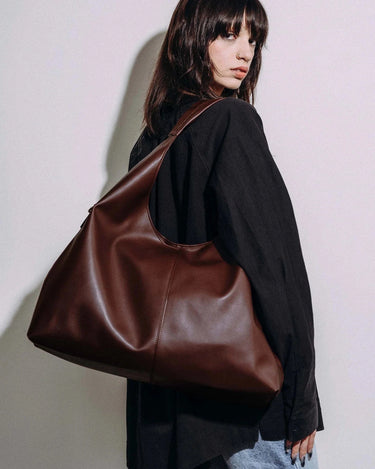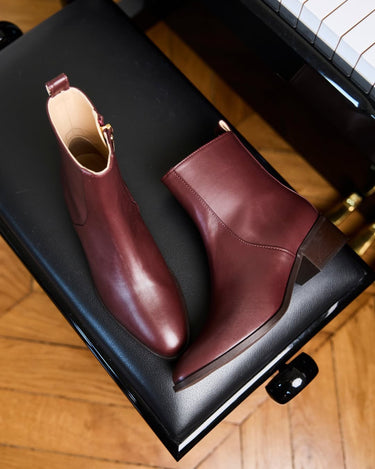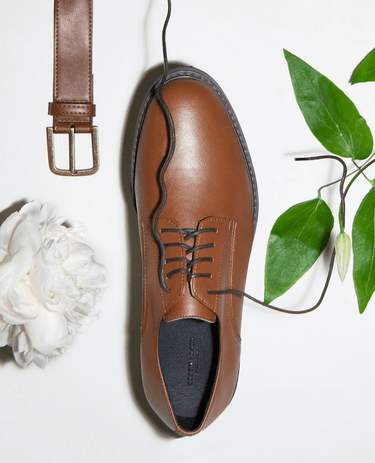What Is Vegan Fashion?
After a lifetime of being relegated to frumpy outsider status, veganism now takes its place on the catwalk as brands such as Chanel, Hugo Boss, and Hermès dabble in plant leathers. But as the term racks up Google searches and the women's vegan fashion market is valued at around $520 billion dollars, let's examine what “vegan fashion” really means.
By Sascha Camilli: writer, speaker, activist, and vegan fashion expert.  It all started, of course, with Stella McCartney: as the pioneering designer who refused to include fur and leather in her collections from day one, she has set the tone for what became a seismic shift towards more conscious fashion.
It all started, of course, with Stella McCartney: as the pioneering designer who refused to include fur and leather in her collections from day one, she has set the tone for what became a seismic shift towards more conscious fashion.
However, confusion and lack of awareness around the term "vegan fashion" was rife until just a few years ago, when veganism boomed into the mainstream, spawning everything from vegan burgers to vegan sofas. As we know, fashion is a huge part of how we live our lives. We all get dressed and whether you consider yourself a style lover or not, chances are you care about what you put on in the morning. So, it's no wonder that veganism, which is not a diet but an all-compassing lifestyle, would touch this aspect of life too.
What Makes Fashion Vegan?
The meaning of the term “vegan fashion” refers to clothing made without using any fabrics, materials, or ingredients which came from an animal in any way. This includes obvious offenders such as all kinds of fur and leather, as well as different iterations of leather such as exotic skins made from crocodiles, alligators, lizards, ostriches, or snakes. It also extends to wool and all similar textiles in the wool realm, like mohair, cashmere, angora, alpaca, and any knitwear made from the hair or fleece of an animal. Vegans also refrain from wearing feathers, whether it be decorative feathers used on dresses and eveningwear or down feathers used to fill puffer jackets.
A little-known material that vegans avoid is silk. Silk is made by boiling silkworm cocoons in order to extract the silk yarn – a process in which silk worms are boiled alive by the thousands. As veganism aims to respect, recognise and protect all animals, this consideration doesn't exclude worms. So silk is a no-no in the vegan wardrobe.
The Small Print
Once the material check is out of the way, tricky territory begins: in theory, smaller components such as glues, dyes and buttons must be animal-free for the product to truly be considered vegan. Sometimes, those elements can be animal-derived – some buttons are made from mother-of-pearl and some embellished items include detailing made from things like animal teeth or bone. But as details such as the contents of dyes can be difficult to trace and complicated for even the companies themselves to keep track of, many vegans take the “good enough” approach and settle for what's on the label. This is a positive step, as it makes vegan fashion accessible to a larger number of people – which, in the end, is what will diminish animal suffering in the clothing industry.
Some companies have, however, began paying attention to smaller components in their supply chains. To be completely certain that no part of your clothing or accessories contains animal-derived ingredients, see PETA's list of over 1000 PETA-Approved Vegan brands. The organisation's approval process includes verifying that glues, dyes and all substances that go into a garment or accessory are animal-free. Here on Immaculate Vegan, care is taken to receive assurance from all brands that their garments are thoroughly vegan down to the smallest components. And many of our brands are also PETA-Approved or approved by The Vegan Society.
Is Vegan Fashion Ethical?
Vegan fashion stems from the core tenet of veganism to reduce harm to other animals where practicable and possible, and most people who choose to wear vegan do so out of concern for the millions of animals suffering for fashion. Through the spread of undercover investigation videos, we now know that 100 million animals are killed every year for fur – many of them by being gassed, poisoned or electrocuted after having spent their entire lives confined in cages where they couldn't even turn around and suffering from severe neglect and diseases.
 Leather, the biggest killer of animals in fashion, takes over a billion lives every year. Many animals in the leather trade endure mutilations such as castration, tail docking and branding without any pain relief, have to go through a gruelling trip to the abattoir, and are killed in full view of other animals. Geese and ducks are often plucked alive for the down that fills on-trend puffer jackets.
Leather, the biggest killer of animals in fashion, takes over a billion lives every year. Many animals in the leather trade endure mutilations such as castration, tail docking and branding without any pain relief, have to go through a gruelling trip to the abattoir, and are killed in full view of other animals. Geese and ducks are often plucked alive for the down that fills on-trend puffer jackets.
Wool, often considered a “natural” and “gentle” material, is so violent that sheep shearers in Australia and Scotland have pled guilty to charges for cruelty to animals. Often shearing leaves sheep with bloody wounds, and like all other animals exploited by humans, they go towards a bloody death at the slaughterhouse when considered no longer useful.
Is Vegan Fashion Sustainable?
Aside from saving animals' lives, vegan fashion is a friend of the environment – rearing animals on such an enormous scale is a leading cause of the climate crisis. Land and air are polluted, large areas are deforestated and biodiversity suffers because of humans' appetite for the flesh and skins of other animals. Leather in particular has been found to contribute to the climate catastrophe in a variety of ways – from greenhouse-gas emissions to being part of the main driver of deforestation in the Amazon rainforest, leather (alongside wool) is part of animal agriculture, a leading cause of the climate crisis. Fashion needs to take responsibility for its part in this crisis, and the best way to do so is to choose vegan.
 Is Vegan Fashion Affordable?
Is Vegan Fashion Affordable?
Vegan fashion comes in a range of price categories. As the term can mean any kind of fashion that is free from animals, vegan fashion is technically available from low-priced fast-fashion companies. But the ethical implications of shopping with these brands deters many consumers that choose vegan because of ethics. On the other end of the spectrum, vegan designs are also available from brands such as Gucci and Hermès – but the high price point makes those designs available to only a select few consumers. Most vegan fashion, however, lives in the middle ground between those two, and carries mid-range prices.
 What Materials Can Vegans Wear?
What Materials Can Vegans Wear?
What do vegans wear? Today, clothing for vegans is more versatile and stylish than ever. Virtually every big-name fashion designer has cut ties with fur, and French faux-fur artisans Ecopel offer KOBA, a vegan fur made from plants. Leather can now be made with apples, mushrooms, pineapples, corn, cactus, grapes, and cork, to name a few. Organic cotton, hemp, Tencel (made from wood-pulp cellulose) and recycled fabrics are replacing wool. And those trendy puffer jackets? They will keep you warm with high-performing vegan fillers, often made with recycled materials.
Vegan fashion is not perfect – like all fashion, it must curb its plastic problem – but it is a start to a fashion system that rejects abuse, exploitation, and supremacy. Our wardrobes shouldn't come at the expense of someone else's suffering and death, and if we want a more compassionate future of fashion, it's our duty to wear the change we wish to see in the world and choose vegan.
By Sascha Camilli
About Sascha
Sascha Camilli is a vegan writer, speaker and activist. Her book Vegan Style is out now on Murdoch Books. For more about Sascha, you can read our interview with her or sign up to her newsletter Kind of Wild.
Cover image by Miomojo
For more great content like this in your inbox, sign up to our newsletter, and save 10% off your next purchase, plus great savings throughout the year.
Related Articles

Vegan Christmas Gifts For Him

Vegan Christmas Gifts For Her



















































































































